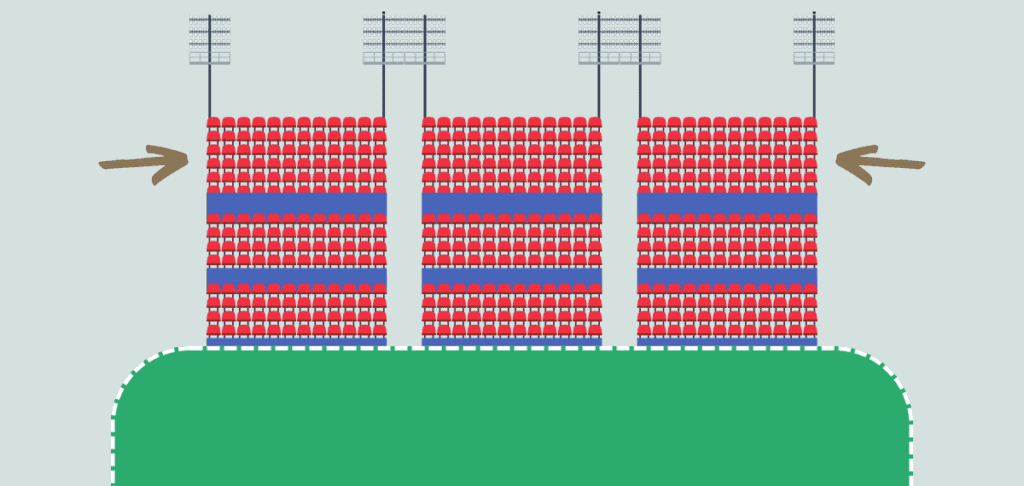Nosebleed seats is an idiom that means really high-up seats in a venue. It is an exaggeration of location, originating from the fact that nosebleeds occur at higher elevations due to the thinner atmosphere. For example, the cheapest seats at a football game are the ones highest up in the stadium. People call those the nosebleed seating.
Idioms like nosebleed seats are phrases where the words together have a different meaning than the words by themselves. They make English colorful and exciting. Knowing them helps you understand English better.
Please keep reading to understand more about this idiom’s meaning and how to use it in your materials!
Nosebleed Seats Meaning

Nosebleed seats or nosebleed section refers to an area of seating in a stadium or arena located very high and far away from the field of play. They’re far from the action, so they’re usually cheaper.
The funny thing is that the name suggests you’re so high up that you could get a nosebleed from the altitude! It’s just a playful way to talk about those high-up seats.
How to Use Nosebleed Seats in a Sentence
- I bought nosebleed seats for the concert because they were all I could afford.
- From our nosebleed seats, the players looked like tiny dots on the field.
- Even though they’re nosebleed seats, I’m excited to be at the game.
- The view isn’t the best from the nosebleed seats, but the atmosphere is still great.
- I always bring binoculars when I’m in the nosebleed seats.
- The nosebleed seats were surprisingly packed during the finals.
- Despite being in the nosebleed seats, we had a blast cheering for our team.
Nosebleed Seats Origin

The phrase nosebleed seats traces its roots back to the 1940s, initially referring to theater seating. However, by the 1980s, the term had shifted in focus, becoming especially popular in the context of sports, notably American football.
The name nosebleed seats is a playful exaggeration. It jests that these seats are so high up in a venue that attendees might get a nosebleed due to the altitude.
One of the earliest mentions of this term is from 1948 in The Post-Standard. A ticket broker named George Solotaire was asked about second balcony seats and humorously responded, “I do not handle nose-bleeders.”
The term made another appearance in 1953, describing the last row in the end zone at what later became the John F. Kennedy Stadium (originally Philadelphia’s Municipal Stadium) during the iconic Army-Navy football game.
Let’s Review
The idiom nosebleed seats is a hyperbolic phrase that indicates seating in a theater, stadium, arena, or other public venue that is higher than all the rest. It alludes to the fact that people often get nosebleeds at high altitudes.
The term is usually used humorously, although it could be considered a complaint in the correct context.
The expression was first used in a theater setting but is now almost exclusively used to describe seats at sporting events.
